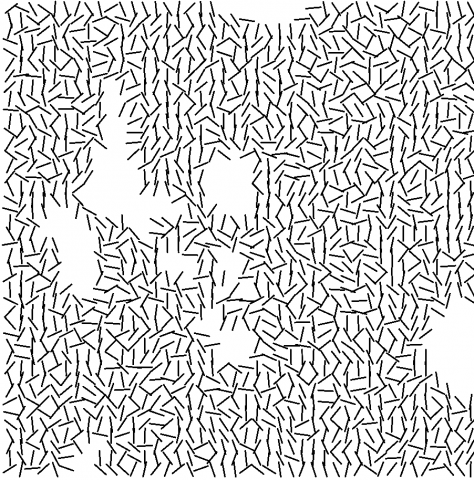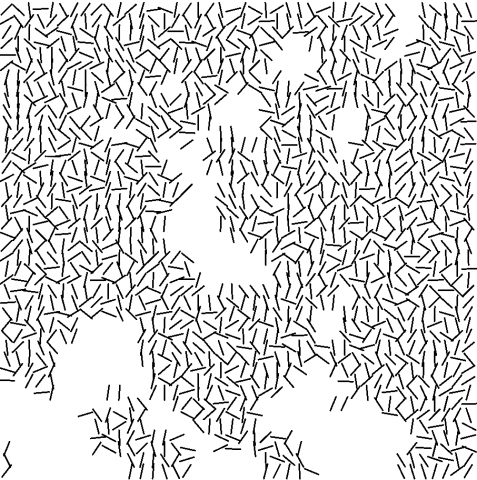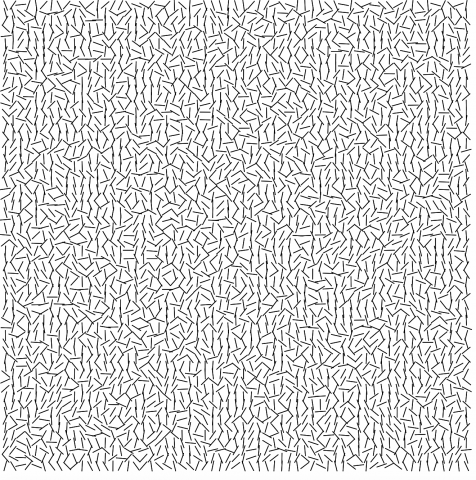Lumar-Interruptions
PLEASE HAVE FUN CLICKING:
You’ll have to refresh to a new ‘movie’ to get new and different interruptions from the audience.
I had a lot of fun with this assignment! And…yes, it’s not exactly a recreation, but the code make the recreation would just be taking out the frameCount element in the perlin noise part of the draw function/just take a screen shot of the program when it first starts.




Essentially, I am making an array that holds all the object lines of a row, and then putting that series of row arrays into my giant lines array, which is now arranged by lines[i][j] = a line in row i and column j. Easy! Kind of like a 2d array. Ish. The perlin noise function is used to determine whether a line should draw or not. Essentially by making the increment by which the x and y of the lines reaaaaally small to zoom into an area of the perlin wave – given that, the closer a line is to another, the closer the noise output value – since noise is only generated between 0 and 1, that given value can determine whether it is drawn or not depending on a specific ratio of how empty you want the canvas. (MUCH THANKS TO PERLIN! And Kaleb was kind enough to have explained the concept behind it as well!)
______________________________________________________________
From Monday:

Simple for loop/grid structure generating lines with somewhat non-uniform random rotation. I’m going to continue playing with limits and Gaussian randomness. And then maybe throw in some Perlin noise to achieve the interruptions – or make it interactive; I’ve been itching to throw in some physics or something like pseudo particle trails that eat up the lines to achieve the random empty spaces.
If anyone else would like to look into this – here’s a link to a lecture on types of randomness!